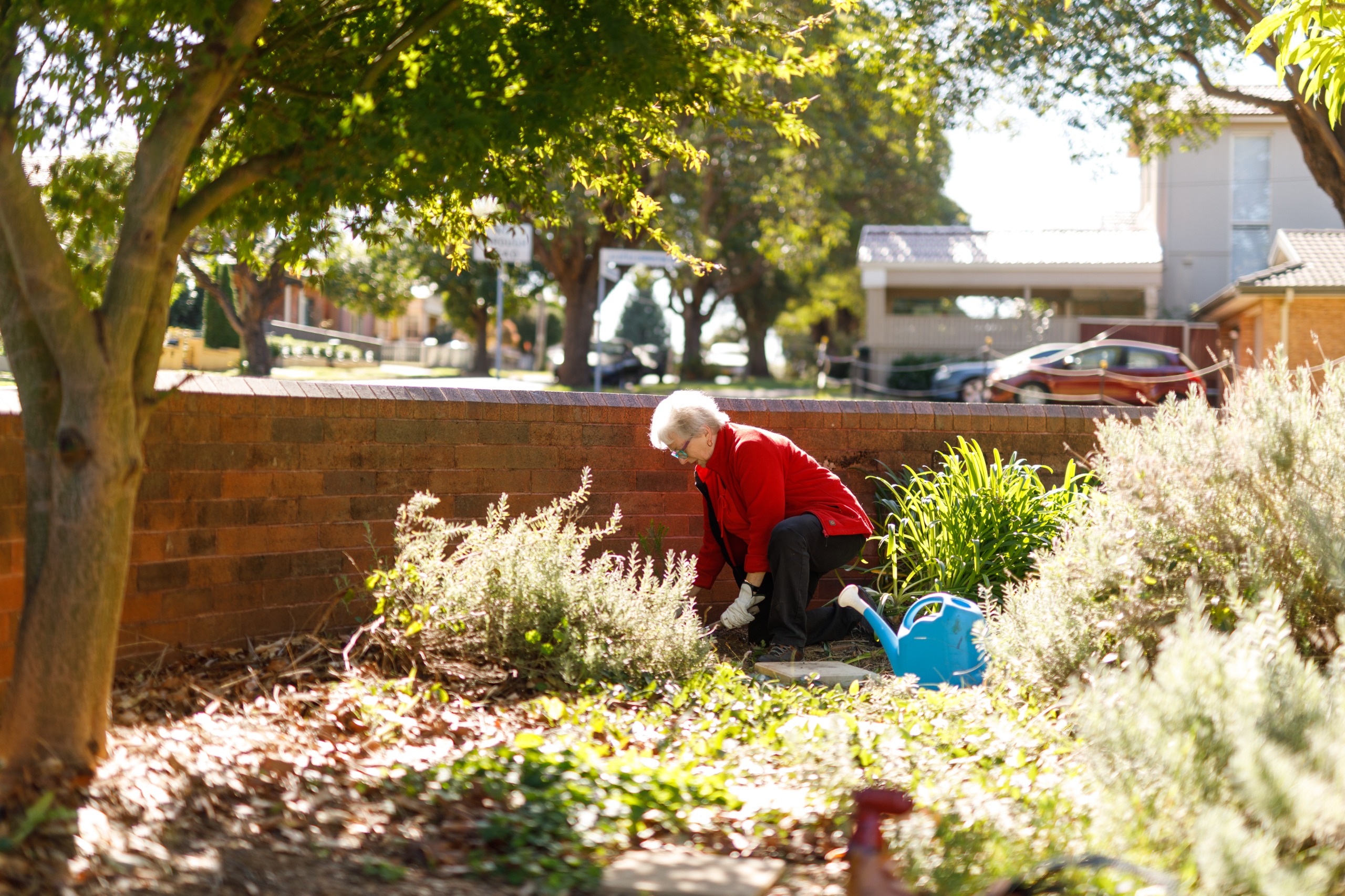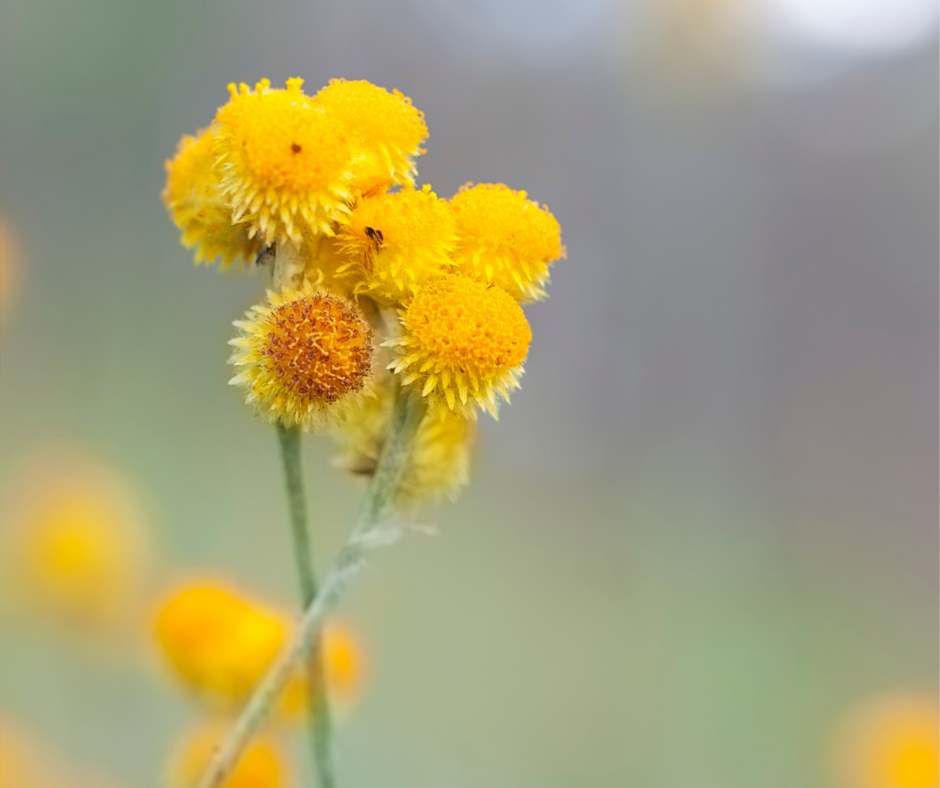Grow Your Green Space & Win!
Enter our Grow Our Green Spaces comp. Balcony, backyard or big block - just grow your patch & win!
🌱 What is Grow Our Green Spaces?
Grow Our Green Spaces is a Council-led campaign designed to empower our community to help increase tree canopy and native vegetation on their properties. Whether you live in a home with a garden, an apartment with a balcony, or you manage a local school or community space, we invite you to get involved!
By planting more native trees and vegetation, we can cool our streets, create habitat for local wildlife, reduce stormwater runoff, and make our neighbourhoods greener, healthier, and more resilient.
📣 Join the competition!
Whether you’re sprucing up a balcony, revitalising your backyard, or transforming a larger community space, this is your chance to boost native vegetation, support biodiversity and win great prizes for your efforts!
We’re inviting residents, schools and local landholders across the City of Canada Bay to take part in the Grow Our Green Spaces Gardening Competition.
Why Register?
When you register for the competition, you’ll gain access to exclusive perks:
- 🌿 More free plants at upcoming giveaways (up to 4 free seedlings at giveaways)
- 🎟️ Priority access to hands-on gardening workshops
- 🎁 A welcome pack with a native seed kit
How it works?
From now until August 2026, registered participants are invited to add native plants and greenery to their outdoor space and then showcase their garden transformation at the end of the competition period to win.
Throughout the year, Council will offer free native plant giveaways, workshops, and expert resources to help you succeed.
At the end of the competition period, entries will be judged on:
- Creativity and visual appeal
- Use of native plant species (can be a mix of natives and non-natives, but no weed species)
- Environmental benefit and habitat value
- Overall transformation and community impact
Winners will be announced in Spring 2026.
Competition categories
To celebrate all types of gardeners, we’ve created three exciting categories:
- 🪴 Balcony Gardens
Perfect for apartments and townhouses with balconies, patios, or rooftops. Show us how you’ve made the most of your vertical and container space with native greenery. - 🏡 Front or Backyard Gardens
Whether you’ve got a courtyard, nature strip, or sprawling yard, this category is for you. We want to see creative and biodiversity-friendly uses of outdoor home spaces. - 🌳 Large Landholder Gardens
For schools, golf courses, shared strata managed gardens and community organisations with larger land areas. From habitat corridors to food forests, this is your time to showcase environmental leadership on a bigger scale.
Competition guidelines
Ready to green your space and show it off? Here's everything you need to know to enter the Grow Our Green Spaces Gardening Competition:
- Registration is required to participate.
- Open to residents, schools, and landholders located within the City of Canada Bay Local Government Area.
- Native plant species must be the primary focus of your garden. Non-native plants are allowed to complement your design, but no weed or invasive species can be included. Check out our Native Planting Guidebook for species recommendations and guidance.
- You can start a new garden or build on an existing one — the goal is to increase vegetation and enhance biodiversity in your space.
- Judging will be based on submitted photos, and, where applicable, written responses and site visits.
- Projects must be completed and submitted by 31 August 2026.
- Entries will be judged on:
- Creativity and effort
- Use of native plants
- Support for habitat or pollinators
- Overall garden transformation
👉 Download full Competition Guidelines & Terms and Conditions
Prizes
Balcony Gardens
- $400 voucher
- Native plants suited for your balcony garden
- Quality gardening hamper pack
Front or Backyard Gardens
- $500 voucher
- Native plants suited for your front or back garden
- Quality gardening hamper pack
Large Landholder Gardens (e.g. strata gardens, schools, golf courses)
- $500 voucher
- Native plants suited for your front or back garden
- Quality gardening hamper pack
All winners will also receive the special prize pack, plus inclusion in Council’s newsletter and social media.
Start planning your garden transformation today - whether it’s a balcony, backyard, or large green space, there’s a prize (and plenty of inspiration) waiting to grow!
💚 How we can help

Council is here to support you every step of the way. Through Grow Our Green Spaces, you’ll have access to:
- Free seasonal native plant giveaways
- Workshops and events with expert guidance on species selection, planting, and maintenance
- Resources and tools to help you choose the right plant for your space
- Community storytelling and competitions to share your progress and inspire others
Whether you're a beginner or a green thumb, we’ll help you find the right plants, plant them in the right place, and care for them into the future.
🌿 Right Plant, Right Place
Planting the right species in the right location is one of the most important things you can do to ensure your plants thrive—and to create a garden that’s low-maintenance, waterwise, and supports local biodiversity.
Whether you have a garden bed, courtyard, or balcony pot, this guide will help you select the best native plants for your space.
Consider sunlight & shade
Understanding how much light your space gets is key to choosing the right plant.
Different native plants have different light needs, and planting them in the wrong conditions can lead to poor growth, stress, or even plant death. Before choosing your plants, observe how much direct sunlight your space receives each day—this will help you find the perfect match.
- Full Sun (6+ hours of direct sunlight/day)
- Part Shade (2–4 hours of sun or filtered light/day)
- Full Shade (<2 hours of direct sun/day)
Understand your soil
Soil is the foundation of every healthy garden. Understanding your soil type will help you choose plants that are most likely to thrive in your space.
- Clay soils are often heavy and slow to drain. Improve clay soil by incorporating gypsum and compost to break it up and enhance drainage.
- Sandy soils are light and drain quickly, but they often lack nutrients. Improve water retention with compost or organic mulch.
- Loamy soils are ideal - well-balanced in drainage and nutrients - and suit most native species.
💡 Simple test: Grab a handful of moist soil and squeeze it. If it clumps and stays together, you likely have clay. If it falls apart or feels gritty, it's sandy.
For balconies or pots, always use a native-specific potting mix to support root health and reduce the risk of overwatering.
Be water-wise
Native plants are naturally adapted to local rainfall and often require minimal watering once established. This makes them an excellent choice for drought-prone areas or gardeners looking to reduce water use.
To help your plants thrive with less water:
- Mulch generously: A thick layer of mulch helps retain moisture, suppress weeds, and improve soil health.
- Group plants by water need: Place low-water plants together to avoid overwatering.
- Water deeply, not frequently: This encourages deeper root systems and greater drought resilience.
- Choose local species: Plants native to your region are more likely to thrive without extra irrigation.
By going water-wise with natives, you're not only saving water, you're creating a more climate-resilient garden.
🐝Native Planting Guide

Why choose native plants?
Native plants are species that have evolved right here in our region, making them perfectly suited to local soil, rainfall, and climate conditions. They’re naturally hardy, meaning they need less water, fertiliser, and maintenance than exotic species—and they’re more resistant to pests and diseases too.
But their biggest superpower? Supporting biodiversity!
Native plants provide essential food, shelter, and nesting materials for local birds, bees, butterflies, and other wildlife. By planting natives, you’re not just gardening, you’re helping rebuild habitat in urban areas and create a healthier, more resilient ecosystem right in your own backyard, balcony, or shared green space.
Need help choosing?
Start by downloading our Grow Our Green Spaces Native Planting Guidebook , packed with:
- Local species recommendations
- Tips to understand your space
- Step-by-step planting and care advice
Still not sure what to plant?
Let science guide you! Visit the Which Plant Where is a tool that can further help you find the right native plants for your conditions—sunny, shady, windy, or dry. Just enter a few site details and receive expert-backed species recommendations. It’s a simple way to ensure your garden not only thrives, but also contributes to a cooler, greener, and more biodiverse Canada Bay.





